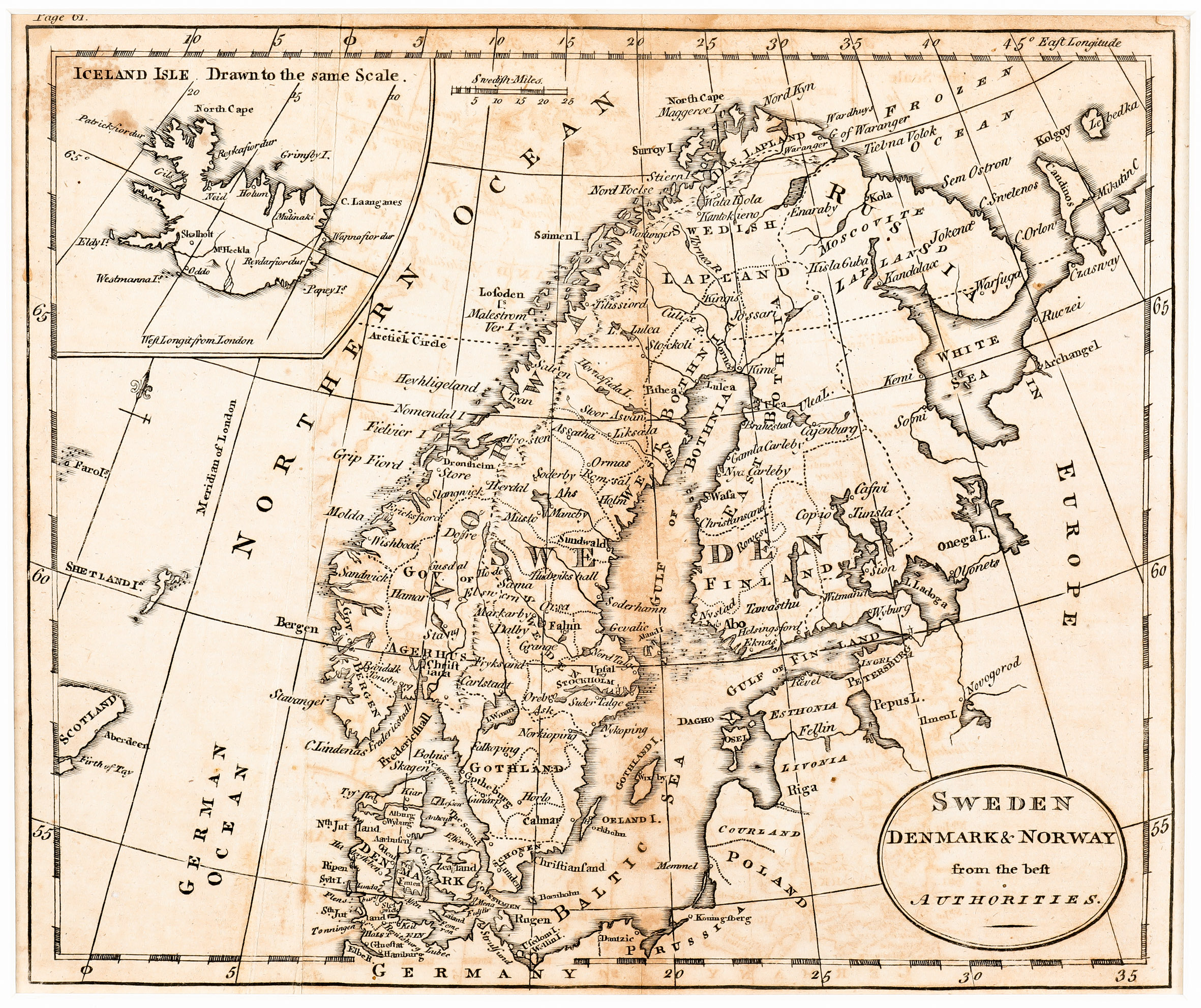Thomas Kitchin (1718 – 1784)
was a London based engraver, cartographer and publisher. At the age of 14, he apprenticed to the prominent mapmaker Emanuel Bowen. In 1739 Kitchin married Bowen‘s daughter Sarah and later inherited much of his preceptor‘s prosperous business. By 1741 Kitchin worked independently and about 1773 he acquired the title „Royal Hydrographer to King George III“ of England, a position his son Thomas Bowen Kitchin also later held. Thomas Kitchin is responsible for numerous maps published in „London Magazine“, „Gentleman‘s Magazine“ and „The Star“. His most important works are the first pocket atlas of Scotland „Geographia Scotiae“ in 1748/49, „The Small English Atlas“ in 1749 which he co-published with another of Bowen‘s apprentices, Thomas Jefferys and „The traveller‘s Guide through England and Wales“ in 1783.
Thomas Kitchin also engraved maps for Guthrie‘s „New geographical, historical and commercial grammar; and present state of the several kingdoms of the world“, published by Charles Dilly, G.G. and J. Robinson in London in 1790. Kitchin is said to have frequently stolen the works of other cartographers which could be the reason why he „created“ so much cartographical work.
Map details
This map is taken from Guthrie’s „Grammar“, engraved by John Russell. Its title is set in an oval frame in the lower right corner. The map shows Scandinavia, the Baltic, „Russia in Europe“, Poland, the northern part of Prussia and Germany, a small part of Scotland, the Shetland Islands and the eastern part of the Faroe Islands.
In the upper left corner is an inset map of Iceland which is unusually separated by a sweeping curve. The text above says „Iceland Isle Drawn to the same Scale“. The Arctic Circle is drawn in Scandinavia but not in the inset. In the interior of Iceland there are only five place-names, amongst them the volcano „M. Heckla“ and the bishoprics Skalholt and Holar („Holum“).
Comments by the collector
The acquisition of this map has an unusual background.I saw this map on the website of a US-based antiquarian and ordered it. Unfortunately the parcel did not reach me and I thought it had gone lost in post. Therefore I took the chance to acquire another copy of the map when it was surprisingly offered on ebay. Shortly afterwards, the parcel was delivered and I was happy. Several months later the missing map surprisingly arrived and consequently, there are now two copies from the identical plate in the „Schulte Collection“ but the quality of this map is less than the one I ordered later and arrived first.



